How to Create a Customer Loyalty Program That Keeps Them Coming Back
Master the art of customer retention with our comprehensive guide on how to create a powerful loyalty program that keeps customers coming back.
A customer journey map—the visual representation of a customer’s experience and touchpoints—is vital if you want to build an efficient …

A customer journey map—the visual representation of a customer’s experience and touchpoints—is vital if you want to build an efficient process and lasting relationships with your audience.
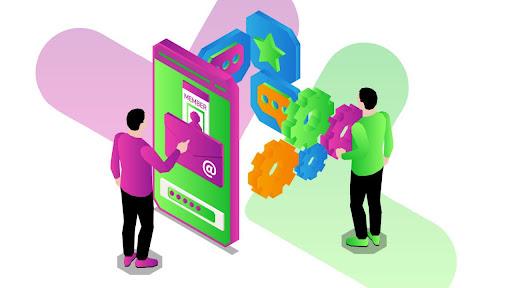
There are many approaches to building journey maps that fail to include the basic components needed for a complete one that actually keeps your customers coming back.
To help you create your own effective journey map, we’ve compiled a list of seven steps you can follow to help move customers from point A to point B.
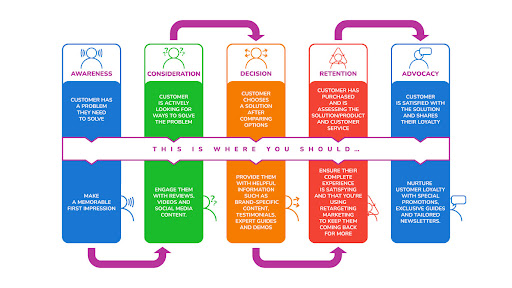
Before diving into your eCommerce customer journey map, it’s important to remind yourself what each stage involves.
The lines are easy to blur here, so it’s best to set clear guidelines whenever possible, which will give you a better picture of how your activities fit into the different stages down the road.
There are five main stages of every eCommerce customer journey.
Within each stage, you should include all possible interactions an existing or potential customer might have with your company. Not only does this help you identify areas for improvement, but it also lets you prioritize which departments are essential during each stage.
For example, which department(s) or platforms they interact with during the consideration stage.
Now that you established the stages of a customer’s journey, let’s examine the other key elements you’ll need to include on your eCommerce customer journey map.
Many companies gloss over this step, but the more you explore these elements, the stronger your maps will be.
We will talk more about the other types of journey maps later on.
We’ll show you how to create buyer personas in the next step.
For example, a trigger could be seeing an ad for a new product, which would prompt the viewer to complete a predetermined action like visiting the website.
These actions are individual steps taken in response to a trigger, while other times, user actions can set off a trigger. Your map needs to include all possible interaction points to facilitate this journey.
Investigate potential pain points a customer might encounter on their journey and find ways to circumvent these areas to create a buying experience that generates more positive emotions.
Providing the right content (customer testimonial, demo, etc.) at a pivotal moment has the ability to positively shift a buyer’s emotions and move them further down the funnel.
Identifying common touchpoints now will save you time and help you uncover additional buyer-specific touchpoints in Step 5.Opportunities: Finding ways to mitigate pain points and improve the customer journey is the final element you need to consider for your customer journey map. Your mindset should be: How can you make this process as enjoyable as possible?
Once you’ve laid the foundation and understand key elements of a customer’s journey, you’re ready to build out your buyer personas and set goals specific to each persona.
Just as no two journeys are the same, you will have to create multiple buyer personas to explore how your customers traverse their buyer’s journey for you to offer the most relevant information to them at the right times.
While this can seem overwhelming, creating a customer journey map that correctly reflects your customer’s experience is essential for effectiveness.
Create buyer personas that represent unique customers or a specific target. These should be small, clearly-defined groups (for example, job titles, roles, journey points, etc.).
Understand your persona’s demographics and what stage of the buyer’s journey they are in because it will inform your decisions as you navigate your customer journey map. This is a critical step and one that many companies often don’t pay enough attention to.
For example, a seasoned marketer from a large corporation who has conducted thorough research will take a completely different journey from a novice marketer from a small business who is just beginning to explore their problem.
Remember: Your customer journey follows the interactions of a particular customer. If your buyer persona is too broad, your journey map will not be effective!
Once you have your buyer personas, you need to identify specific goals and triggers for each persona. What is their ultimate goal for each stage of the buying process? What triggers can you place to help them achieve their goal?
For example, the seasoned marketer is already well into the consideration stage and ready to decide. Their goal is to buy, whereas the novice marketer’s goal is to conduct research.
Understanding your buyer persona’s goals helps you tailor your strategy to fit their needs and aid in moving them down the funnel.
After establishing your persona(s), you must conduct target-specific research. Consider the following when generating your research questions:
When conducting research, only reach out to existing, potential, and referral customers that fit your target audience, as they will provide the most accurate feedback.
Here are some common methods for collecting persona research:
Use this information to flesh out your buyer persona fully. You might even uncover some hidden goals or touchpoints you didn’t even know existed.
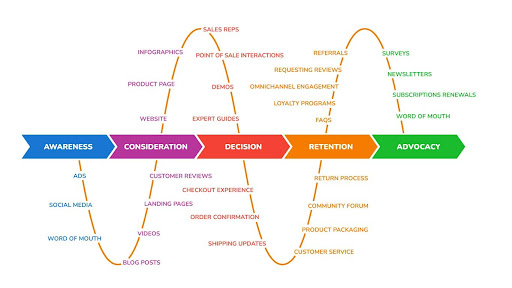
Having already identified some common touchpoints during Step 2 and uncovering additional points in Step 4, you should be able to easily determine which ones your customers and prospects are currently using.
However, you now need to discover and define all touchpoints specific to your buyer persona. This includes the ones they should be using but might not be. Examples of this include:
Touchpoint performance may be a key indicator of what is working and what’s not. For example, lower interactions could mean higher bounce rates, and elevated interactions could mean a process takes too long to complete.
Some common touchpoints that correspond to the buyer stage include (some touchpoints occur during multiple stages):
Remember: Touchpoints are places where customers form opinions about your company. You don’t want a particular point to become a pain point that translates into a negative opinion about your company.
While many companies focus on the touchpoints that generate and convert leads, the touchpoints that occur during the later stages actually drive your revenue.
While this may seem counterintuitive, 80% of your business’s revenue comes from 20% of its returning customers, according to the Pareto rule. This means you want to make sure your late-stage touchpoints are optimized.
Marketers use triggers and actions to improve the chances that customers will take the desired action. Use the touchpoint information you collected to create if-then flowcharts for specific triggers and actions you want to focus on.
For example, if a customer makes a purchase, then invite them to become a loyalty member. If they accept this offer, then invite them to refer friends to get more points. If they don’t accept the offer, wait seven days and invite them again with an additional incentive.
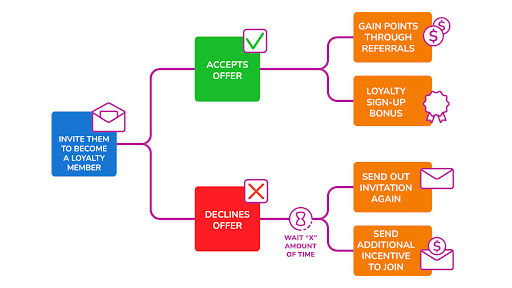
Remember, there are two types of triggers:
Use both types of triggers to create highly targeted and personalized marketing campaigns.
For example, you could send a triggered email to customers who’ve abandoned their cart or offer a discount to customers on their birthday.
Additionally, both internal and external triggers can be used to create automated marketing campaigns. Automated campaigns are marketing campaigns set up in advance and triggered by certain events or conditions.
For example, you could set up an automated email campaign triggered by special occasions like an anniversary. Or, you could set up a campaign triggered when a customer finishes a conversation with a sales or customer service rep.
If you’re having trouble building automated marketing campaigns or tracking the effectiveness of your campaign, don’t worry—you’re not alone. Many marketers struggle with this same issue.
With Patch’s automation builder, creating customer journeys from start to finish and automating tasks for your business has never been easier. Their all-in-one marketing retention platform is designed for you to build custom triggers and actions that keep your customers coming back.
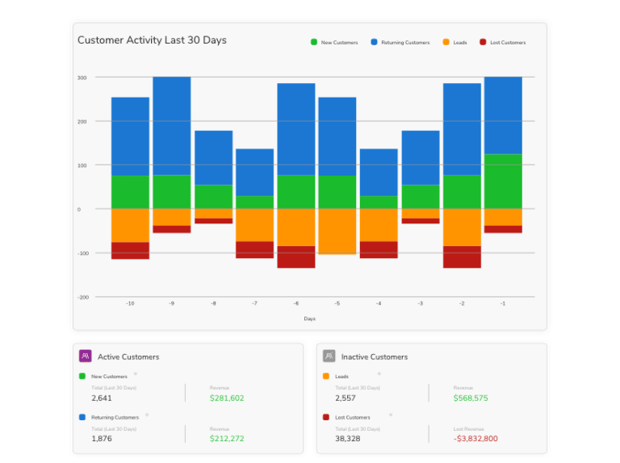
They help you identify which leads aren’t converting and which ones you’re losing, so you can automate the customer journey with unique triggers to make sure these customers convert.
An effective eCommerce customer journey map will evaluate every part of your business. If you uncover flaws or areas that need improvement, determine which resources you have available to dedicate to solving this problem.
If your map reveals your sign-up process is complicated and that the process is causing a pain point for new customers, identifying this problem and streamlining the process will improve your customer’s experience.
While optimizing faulty touchpoints and triggers helps improve the customer’s journey, the main goal of the customer journey map is to help customers move down the funnel and convert.
Pro Tip: Don’t get too caught up trying to optimize every touchpoint or influence every emotion—focus on the ones that have the largest impact.
We’re almost done! After you have compiled a customer journey map, be sure to evaluate it to test its effectiveness regularly. It should never be a one-and-done project.
Reviewing your map quarterly or semi-annually will help identify gaps, see roadblocks, and discover opportunities for streamlining.
Additionally, if you make any changes to the products or services offered, you should update your maps to reflect your new processes.
Did you know that you are able to use this process to create different types of customer journey maps?
Here are some of the most common ways to visualize your buyer’s journey:
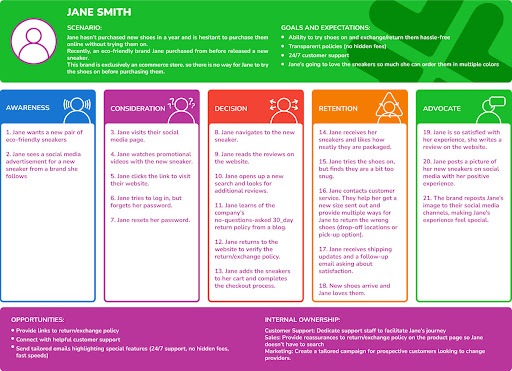
Current state is the most common type of a customer journey map where you evaluate how customers currently interact with your product or service.
The goal is to visualize your customers’ thoughts, emotions, and actions as they experience your brand’s touchpoints. Since this map evaluates current actions, it’s best used for identifying areas of improvement.
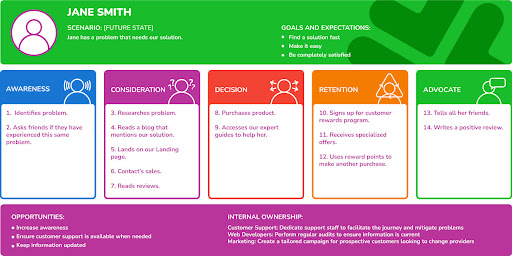
Just as current state maps consider real-time actions, future state maps are concerned with your customers’ future thoughts, emotions, and actions.
This type of map is used to help teams find a way to bridge the gap between where the customer journey is currently and where they want it to be. You cannot complete this type of map without first drafting a current state map.
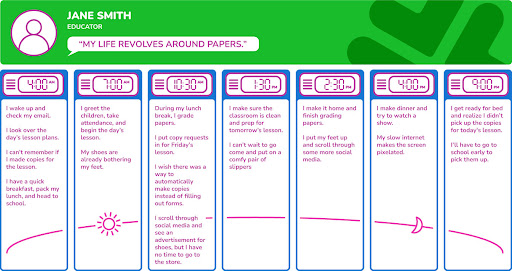
This exploratory map considers the customer’s daily experiences and behaviors, regardless of their interaction with your business. It visually represents their day-to-day thoughts, actions, and emotions. This type of map evaluates potential pain points and is preferable for developing new products and marketing strategies.
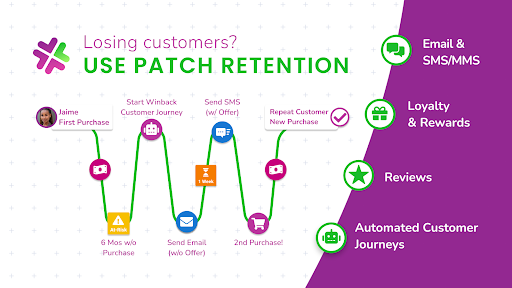
Now that you have the tools you need to build effective customer journey maps, what comes next? You want your customers to follow those perfect journeys, of course!
But do you have the tools to identify which leads are converting or which customers are no longer purchasing from you?
While the overall goal of most marketing teams is to convert, those one-time purchasers only account for a small percentage of your total revenue. Patch’s digital Loyalty and Retention Marketing solutions help turn your customers into brand loyalists to drastically boost their lifetime value.
Find out how many customers you’re leaking. Contact one of our marketing specialists and see how we help you fix that leak.
Master the art of customer retention with our comprehensive guide on how to create a powerful loyalty program that keeps customers coming back.
Explore the benefits of incorporating marketing automation into your customer journey, driving growth, boosting retention rates and overall...
Unlock customer retention with Patch: Revive abandoned carts, bolster retention strategies, and drive e-commerce success!